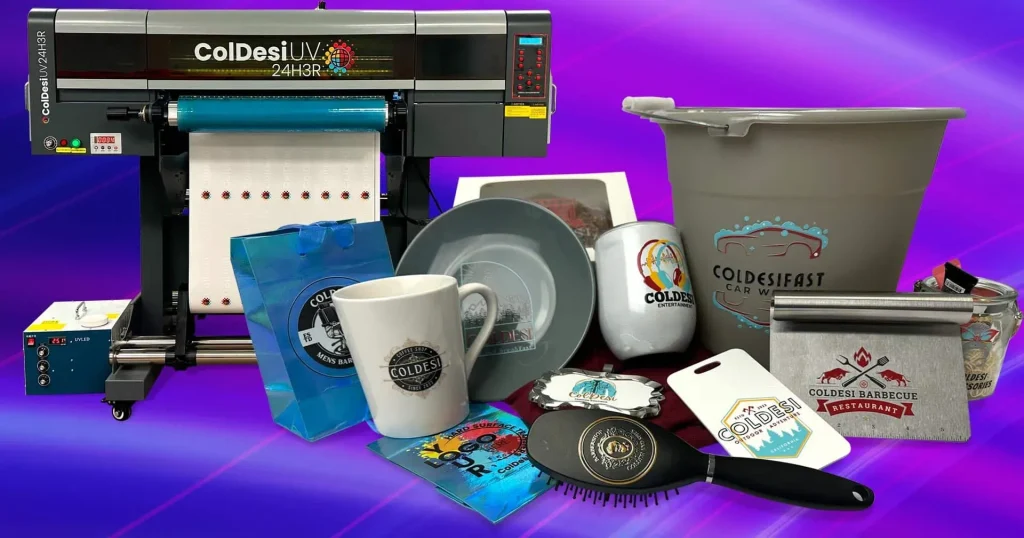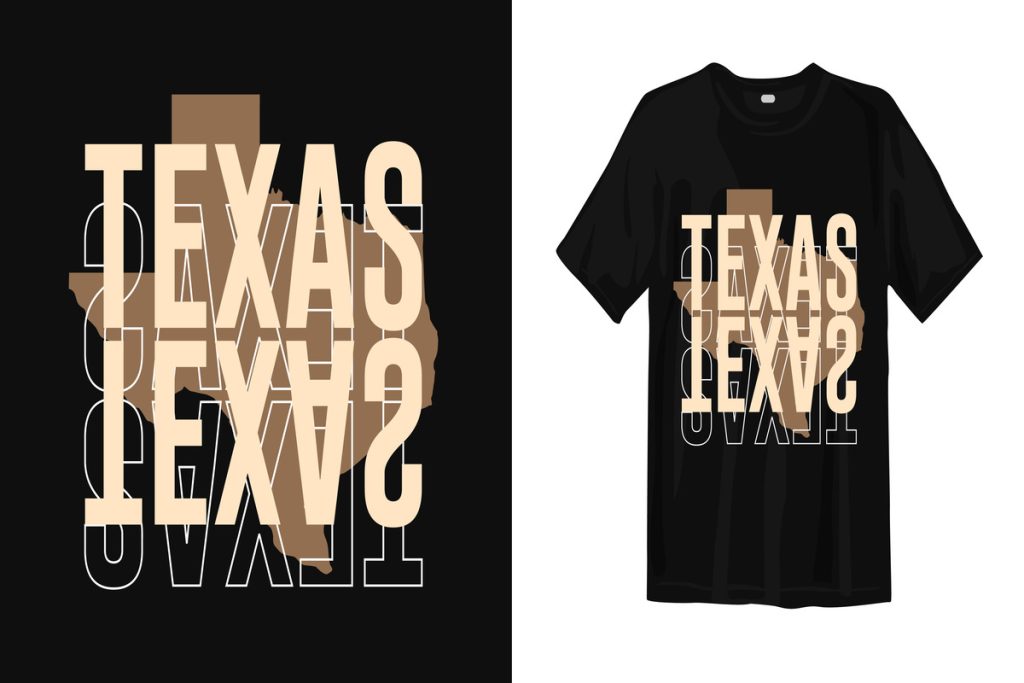UV DTF printing, or Ultra-Violet Direct-to-Film printing, represents a groundbreaking advancement in the world of printing technology. This innovative technique marries the quick-drying properties of UV inks with the versatility of direct-to-film transfer, allowing prints to adhere beautifully to an array of surfaces, from fabric to metal. As industries continue to seek high-quality, durable prints, understanding UV DTF techniques becomes essential for any entrepreneur in the printing field. If you’re wondering how to start UV DTF printing, this guide will illuminate the necessary UV DTF printing equipment, the best UV DTF inks on the market, and the critical steps in the UV DTF printing process. Get ready to explore the exciting possibilities that UV DTF printing can bring to your creative projects!
In the realm of contemporary printing, the term ‘Direct-to-Film (DTF) printing with UV technology’ is gaining notoriety for its efficiency and superior outcomes. This method employs cutting-edge ultraviolet curing processes that enable rapid printing and quick turnaround times, making it a favorite among printing professionals. By harnessing the robust capabilities of UV inks, this printing approach ensures vibrant, long-lasting images on a variety of materials. Those interested in embarking on a DTF printing journey should familiarize themselves with the vital DTF printing equipment, the selection of compatible inks, and the specific workflow essential for achieving high-quality results. The allure of this innovative printing method lies in its potential to elevate the quality of printed designs, catering to an increasingly diverse market.
Understanding the Basics of UV DTF Printing
UV DTF (Direct-to-Film) printing is a transformative technique that combines direct-to-film transfer and UV printing technologies. This method has gained significant traction in various industries due to its ability to produce high-quality prints on diverse materials such as fabrics, wood, metal, and more. Understanding the fundamental principles of UV DTF printing is essential for anyone looking to start in this field, as it lays the foundation for mastering the process and ensuring success in your printing endeavors.
One of the key aspects of UV DTF printing is its reliance on UV light to cure inks on a film before transferring to the final substrate. This curing process results in exceptionally vibrant colors and intricate designs that are resistant to wear and environmental factors. By understanding the intricacies of this technique, such as the importance of surface preparation and curing methods, newcomers can achieve impressive results that stand out in the competitive printing market.
Essential Equipment for UV DTF Printing
Equipping yourself with the right tools is pivotal when starting with UV DTF printing. The core component of your setup is a specialized UV printer designed for this application. These printers are built to handle UV inks and can achieve high resolutions, which is essential for producing quality prints. When evaluating options, consider models known for their reliability and ease of use, which can significantly streamline your learning curve.
In addition to the printer, the selection of transfer film is crucial. High-quality transfer films specifically designed for UV inks ensure that the printed images adhere properly during the transfer process. Furthermore, incorporating a dependable UV curing system into your setup is vital, as it ensures that the printed designs are cured effectively, enhancing durability and resistance to fading. Thus, understanding and investing in proper equipment is a critical step toward achieving professional results.
Choosing the Best UV DTF Inks
When embarking on your UV DTF printing journey, the selection of inks plays an influential role in the quality of your prints. Opting for UV inks specially formulated for DTF applications can make a noticeable difference in color vibrancy and adhesion. These inks provide sharp designs with a brilliant finish, ensuring the longevity of your prints even when exposed to harsh conditions.
Moreover, ensuring compatibility between your selected inks and your printer is essential. Industries often highlight the importance of adhering to manufacturer recommendations to prevent any operational hiccups. By investing time into researching and selecting the best UV DTF inks available, you can significantly elevate the quality of your printing output, making your products more appealing and durable.
Mastering the Artwork Preparation Process
Preparation is the backbone of successful UV DTF printing, and it starts with your artwork. Utilizing professional graphic design software like Adobe Illustrator or CorelDRAW is recommended for creating stunning visuals. It’s essential to design your images in vector format, allowing them to retain clarity at any size, which is crucial for high-resolution printing.
Another aspect of artwork preparation involves color management. Setting your palette to CMYK is vital, as this color mode is standard in printing processes. This choice ensures that the final product reflects the intended colors accurately. Taking these preparation steps seriously will lay a solid groundwork for the printing process, ultimately leading to superior outcomes.
The UV DTF Printing Process Explained
Understanding the UV DTF printing process is key to achieving beautiful, high-quality results. The process starts by loading the transfer film into the printer and calibrating the settings according to your specific design and substrate. This initial setup is critical, as selecting the right resolution and print speed directly affects the final quality of your work.
Once you’re ready, execute the print job, keeping in mind manufacturer guidelines for curing and adhesion. Each stage of the printing process must be handled with care to avoid errors that might compromise your designs. By adhering to best practices and understanding the nuances of the UV DTF printing process, you set yourself up for success in producing vibrant and durable prints.
Curing Techniques for Enhanced Durability
After successfully printing your designs, the next crucial step is the curing process, which solidifies the inks on the transfer film. Employing a high-quality UV curing unit is vital to ensure that inks are fully cured, which enhances both the durability and vibrancy of your prints. Proper curing prevents fading and provides resistance to environmental elements, essential for long-lasting products.
The curing process not only affects the print quality but also impacts how well the prints adhere to surfaces during the transfer stage. By mastering these techniques, you not only protect your investment but also guarantee that your creations stand the test of time while being visually striking. Investing time in learning effective curing methods is a worthwhile endeavor for any serious UV DTF printer.
Frequently Asked Questions
What equipment is necessary for UV DTF printing?
To start with UV DTF printing, essential equipment includes a specialized UV printer designed for DTF applications, UV transfer films, and a UV curing system. The printer should deliver high-resolution prints, while the films must work specifically with UV inks for optimal transfer, and the curing system ensures durability and resistance to environmental factors.
How do I select the best UV DTF inks for my projects?
Choosing the best UV DTF inks is crucial for quality prints. Look for inks specifically formulated for DTF applications that offer vibrant colors and excellent adhesion. Ensure compatibility with your printer by checking the manufacturer’s recommendations to avoid issues during the printing process.
What is the UV DTF printing process?
The UV DTF printing process involves several key steps: load the special transfer film into the printer, calibrate the printer settings for your design, execute the print job, and then cure the inks using a UV curing unit. This ensures that the prints maintain their vibrancy and resilience against wear.
Can I print on various surfaces using UV DTF printing techniques?
Yes, UV DTF printing techniques allow you to print on a wide variety of surfaces including textiles, wood, metal, and more. This versatility makes it an ideal choice for diverse applications, from custom clothing to promotional items.
What preparation is needed for artwork in UV DTF printing?
When preparing artwork for UV DTF printing, use professional graphic design software to create designs in vector format, ensuring quality at any size. Set your color palette in CMYK mode for accurate color representation during printing.
Why is curing important in the UV DTF printing process?
Curing is a critical step in the UV DTF printing process as it ensures that the ink adheres properly to the transfer film and maintains durability. Adequate curing enhances the vibrancy of the colors and makes the prints resistant to environmental damage, prolonging their lifespan.
| Step | Description |
|---|---|
| 1 | Understand the Equipment Required – Include UV printer, transfer film, and curing system. |
| 2 | Select the Right Inks – Use UV inks formulated for DTF applications. |
| 3 | Prepare Your Artwork – Use graphic design software and maintain vector format. |
| 4 | Execute the Printing Process – Load the film, calibrate settings, and print your design. |
| 5 | Cure the Inks – Utilize a UV curing unit post-printing for durability. |
| 6 | Transfer the Design – Use heat transfer to apply prints to the desired material. |
| 7 | Apply Finishing Touches – Consider trimming and protective coatings for longevity. |
Summary
UV DTF Printing has emerged as a transformative technique in the printing world, combining the efficiency of UV technology with direct-to-film transfers. This innovative printing method allows for the creation of vibrant, high-quality prints on a diverse range of materials, making it a versatile choice for professionals and hobbyists alike. By following the straightforward steps outlined in this guide, individuals can effectively embark on their UV DTF printing journey, ensuring each stage from equipment selection to the final transfer process is mastered. As the demand for personalized and durable products continues to grow, UV DTF Printing offers limitless creative opportunities.



